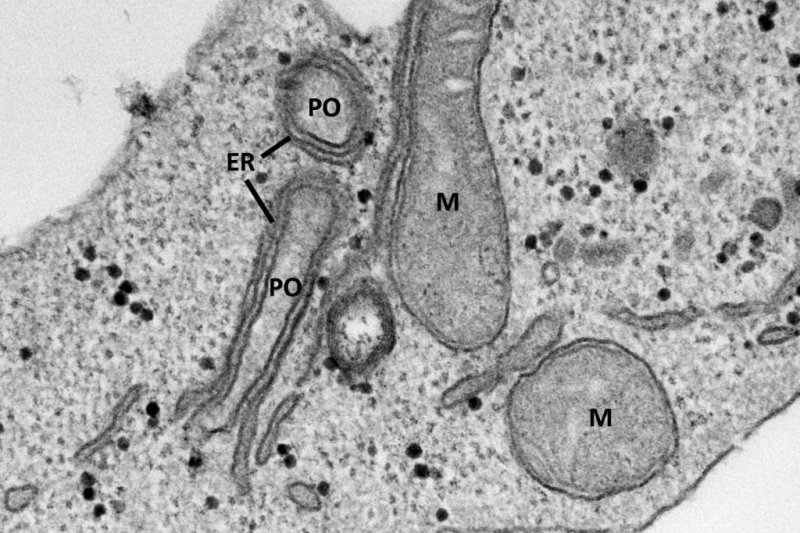Researchers from the University of Exeter have discovered how two specific cell organelles interact.Close interaction of the endoplasmic reticulum (ER) with peroxisomes (PO) in cultured cells is shown by electron microscopy. M, mitochondria. Photo by the University of Exeter
Jan. 20 (UPI) -- Researchers from the University of Exeter in England have discovered how two specific cell organelles work together to produce specific lipids.
Cell organelles are the functional units within cells that interact to perform specialized functions in the cell.
A new study from the University of Exeter shows how the peroxisomes and the endoplasmic reticulum, or ER, cell organelles interact with each other and work together to create lipids used for the function of nerve cells and to protect cells from oxidative damage.
"Close contacts between peroxisomes and the ER were observed more than 50 years ago in ultrastructural studies, but the molecular mechanism remained a mystery," Dr. Michael Schrader of the University of Exeter and lead author of the study, said in a press release. "This is the first molecular tether identified in humans, which mediates the contact between these two important cell compartments."
Peroxisome function loss can lead to severe or deadly developmental disorders and neurological defects.
Researchers found that a protein at the peroxisomes called ACBD5 directly interacts with a protein in the ER called VAPB to link both organelles and allow for the transfer of lipids.
If this interaction is lost, the ER and peroxisomes no longer interact and the lipid transfer does not occur.
"If we understand organelle interaction better we might also be able to use this knowledge to protect cells from certain stress conditions which are linked to age-related conditions like neurodegeneration, blindness and diabetes," Schrader said.
The study was published in the Journal of Cell Biology.















